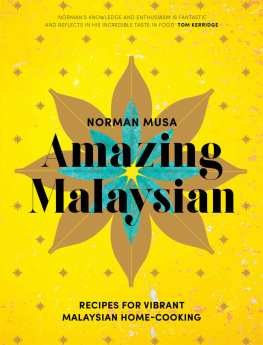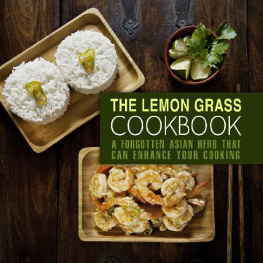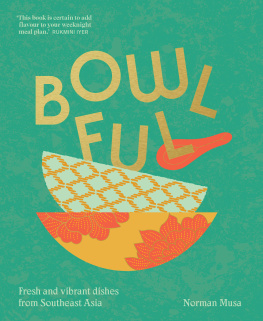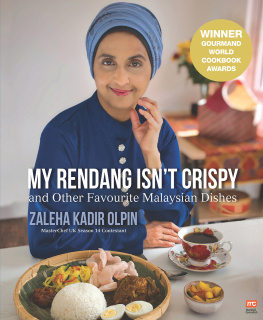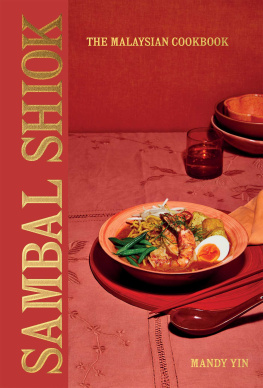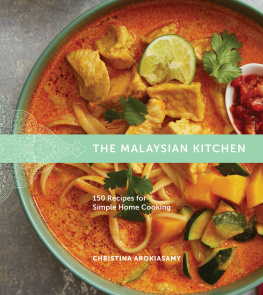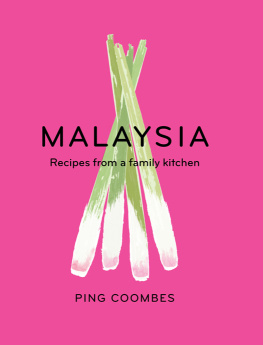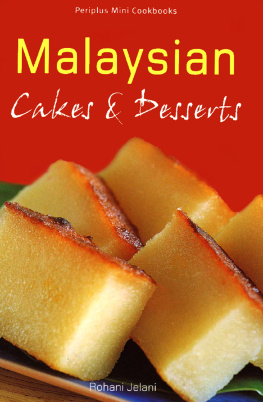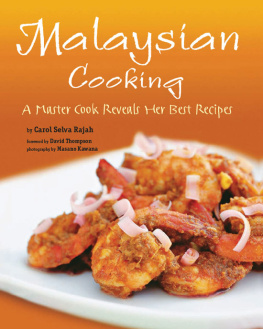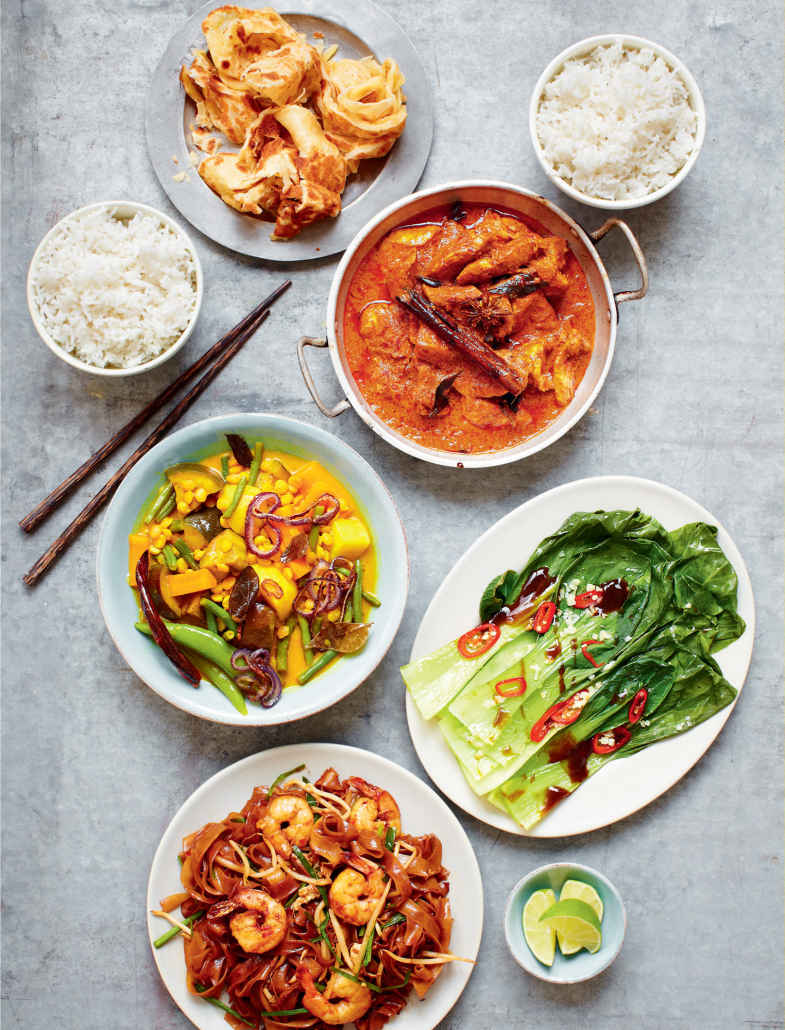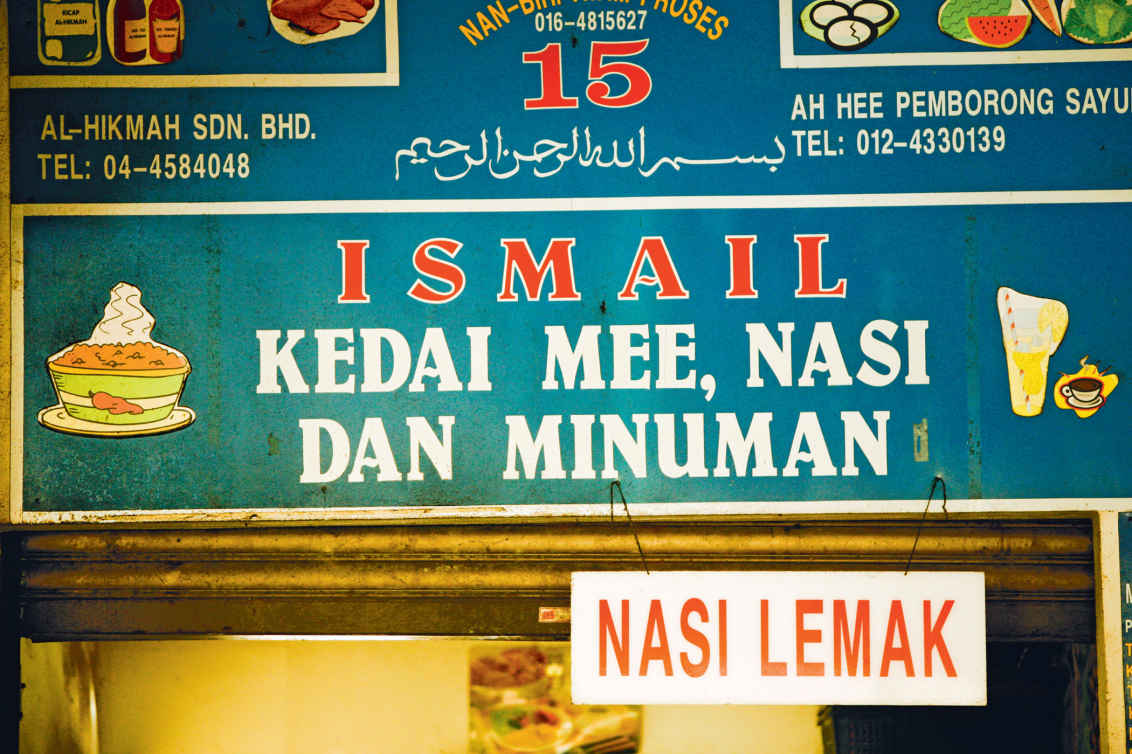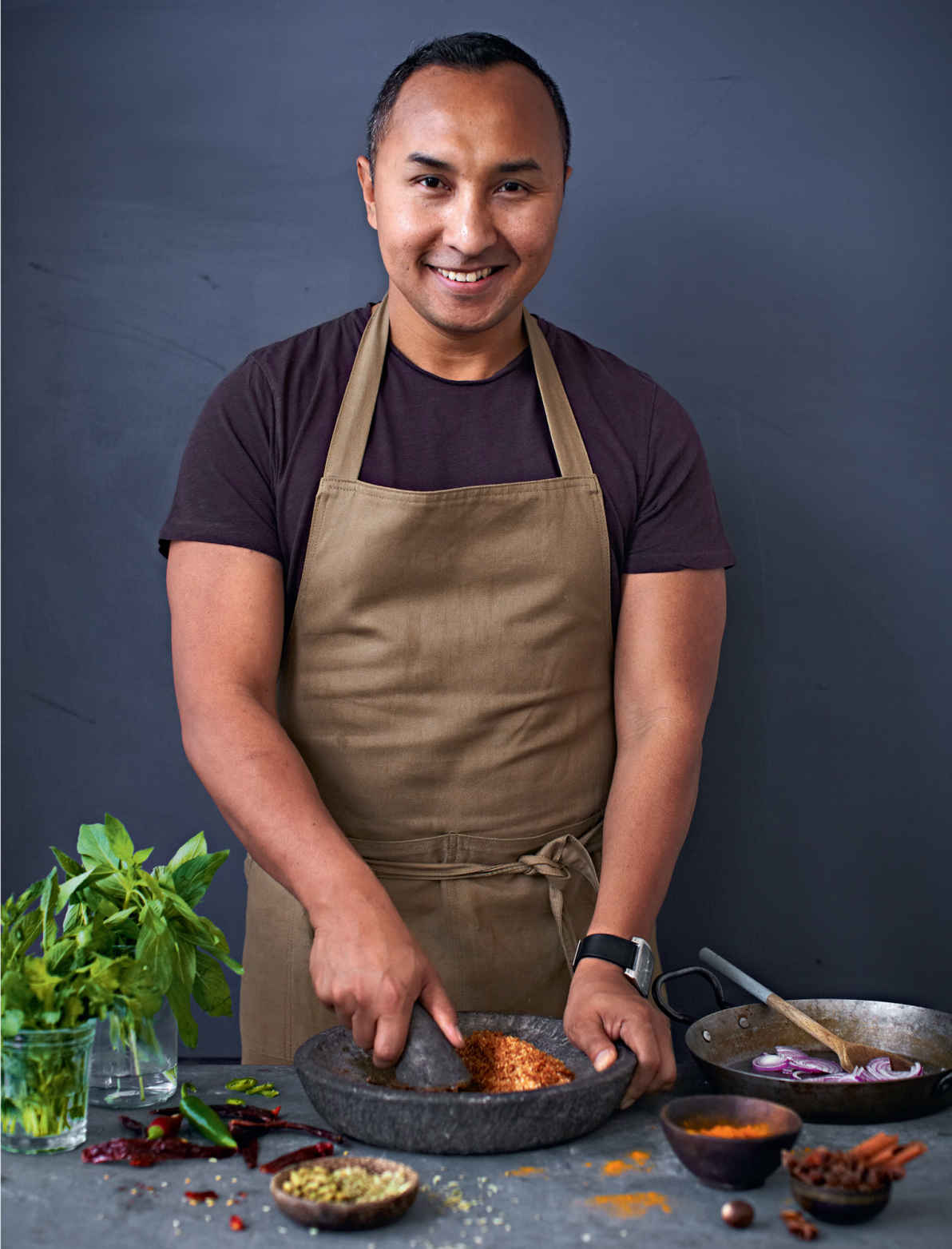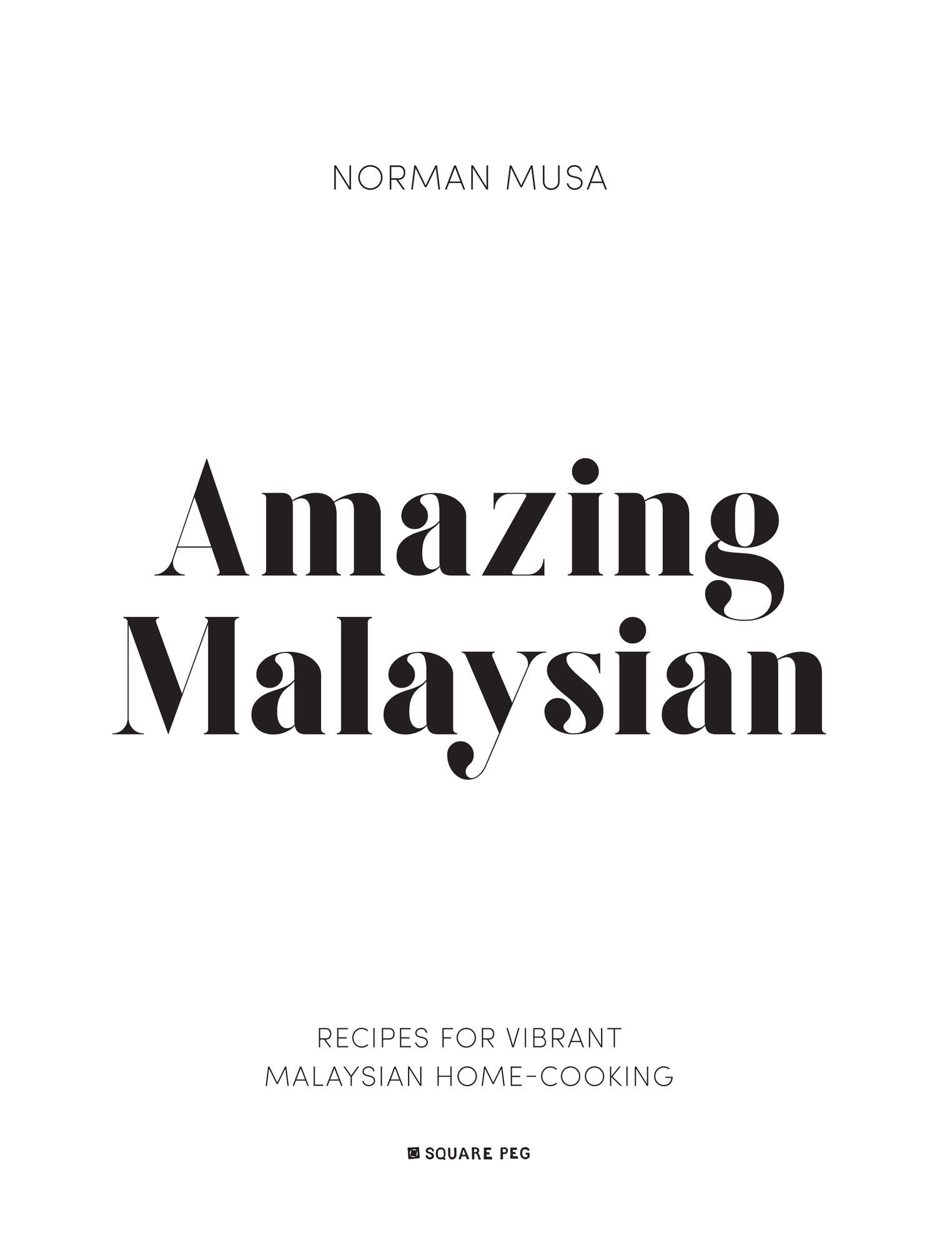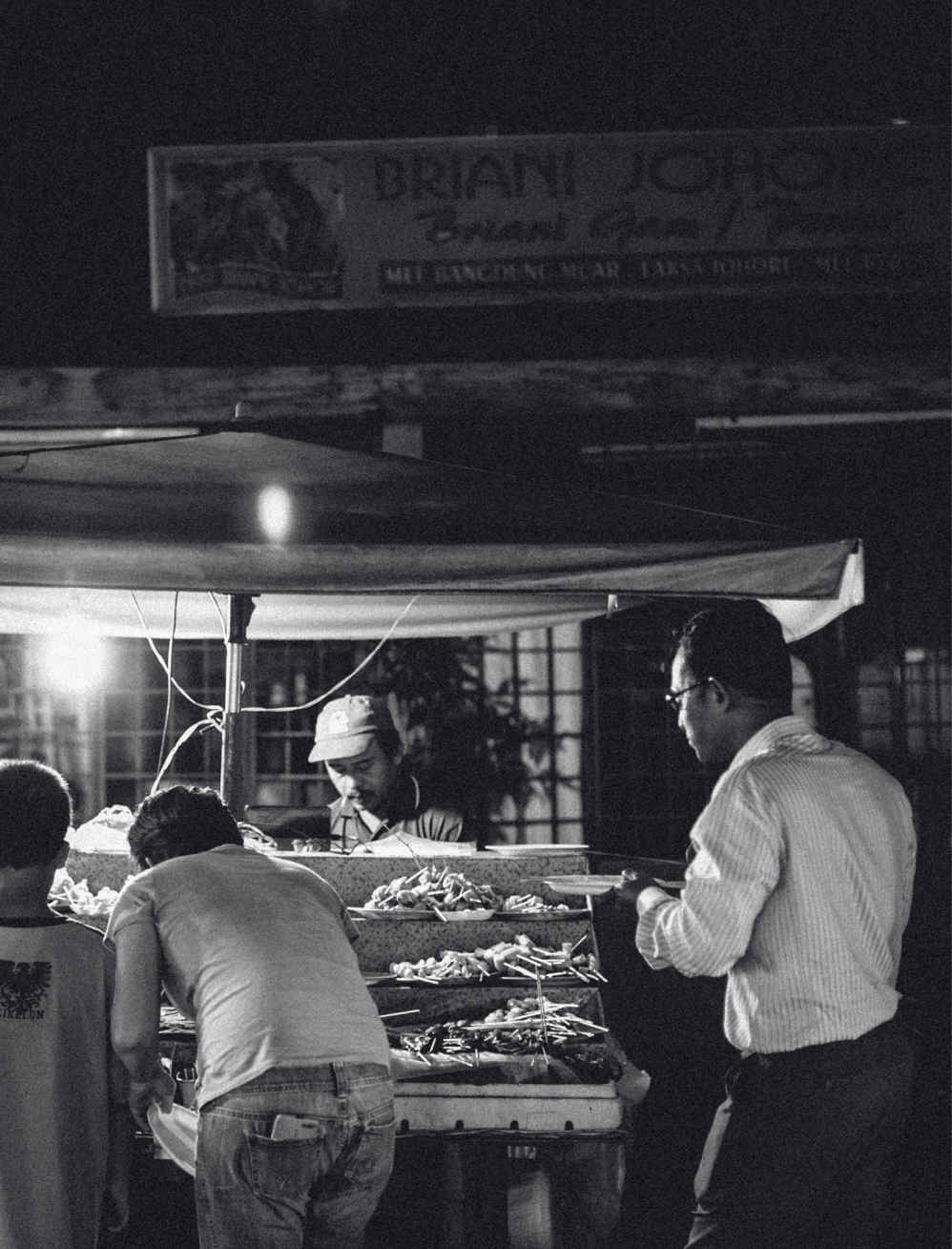Contents
List of Recipes
About the Book
Malaysian food is incredible. Think vibrant, healthy dishes with dazzling flavours and textures. With over 100 recipes using ingredients that you can find in any supermarket this is the ultimate guide to cooking Malaysian food at home. Try an authentic satay, an aromatic curry, a laksa, or simply the perfect fluffy coconut rice.
About the Author
NORMAN MUSA is an award-winning Malaysian chef and the official Food Ambassador for Kuala Lumpur.
He is co-founder of Ning restaurant in Manchester and holds regular supper clubs in London. He also has a restaurant in Malaysia called Nasi Daging.
He regularly features in print media and has appeared on television on Tom Kerridges Best Ever Dishes and Sunday Brunch . He is currently working on a cookery programme for Malaysian television. He regularly appears at food festivals around the UK, Europe and Malaysia. He also teaches regularly at cookery schools, like Leiths School of Food & Wine.
To my late mum and dad for the unconditional love they gave me and to Anne, for the beautiful friendship we had.
Foreword
The first time I went to Malaysia in the early 1980s, I was struck by its amazing cuisine. In the following decades, I had many opportunities to cook with Malaysian chefs not only in Malaysia but also in London. I was consistently impressed by their exquisite palate and love of cooking.
Malaysia has always been a crossroad of influences and the ultimate fusion of Malay, Chinese, Indian, Arabic and Portuguese cuisine. My subsequent sojourns back to Malaysia convinced me that it was an underappreciated cuisine and relatively unknown outside of Asia.
So I am thrilled that Norman Musa, a talented restaurant chef, has written this definitive book on Malaysian cookery. Infused with his moving personal accounts of his mother and fathers recipes, the book brings to life the glories of Malaysian cuisine with beautiful photographs and mouth-watering dishes. The clear directions and personal guidance in each recipe makes this book a classic and it should be on every serious cooks bookshelf. From street foods and snacks to the wonderful aromatic curries as well as simple stir-fries, you can almost taste the food. There are delectable and original salads and vegetable dishes that are equally satisfying to vegetarians and non-vegetarians. The noodle and rice recipes are both imaginative and creative, while the desserts are a reflection of the richness of the fruit culture of Malaysia.
Normans book has filled a gap in world food culture and I for one am enormously grateful. Thank you, Norman, for sharing the fabulous cuisine of Malaysia with us!

Ken Hom, OBE
I have lived in the UK for 21 years and the thing I miss most about Malaysia is, and always will be, the food. My obsession with recreating the flavours from back home spurred me to set up my own restaurant, Ning, in Manchester back in 2006. Here the menu is filled with classics like Roti Canai () that you find on every street corner in Penang.
This book is like a love letter to everything that is great about Malaysian cooking. From well-known classics and simple street food to special festive dishes, it is full of recipes which mean so much to me, and taste so good that I had to share them.
Food is at the heart of Malaysian life. Big cook-ups for family gatherings, eating street food at roadside hawker stalls, and cooking banquets for 2,000 guests are all part of our cultural scene. Whats more, eating is a 24/7 activity, and its certainly not unheard of for us to eat out at 2 a.m., with the whole family in tow.
Although there are now supermarkets chains in most cities, traditional street food is alive and kicking up and down the country. Out on the streets youll find the full-on sensory experience of real Malaysian food: from village markets touting a kaleidoscopic array of fruits and vegetables, to curb-side stalls offering one single, exquisite dish. So in this book I have devoted the first chapter to street food and the last chapter to Malaysian kitchen essentials. These chapters will give you the tools to cook like a true and passionate Malaysian cook, just like my mum who taught me how to do it all.
Diversity
Food is what brings us Malaysians together, and we are rightly proud of it. Our food has an incredibly rich blend of influences. Think Portuguese-meets-Arab-meets-Indian-meets-Chinese-meets-Thai-and-Indonesian and youre getting close! Admittedly you dont find all these flavours in one single recipe, as different dishes combine different influences. But the point is that Malaysia has a complex ethnic history and this makes for amazing food.
There are three major ethnic groups in Malaysia: native Malay, Chinese and Indian. And Malaysia has also been colonized in the past by the Portuguese, Dutch and British. All these have left a significant mark. Nutmeg, for example, was originally planted by the British in Penang Island and today this is still the big attraction of this area where I grew up.
Malaysian food has also been influenced by its neighbouring countries. In the north our food tends to have a Thai influence whereas in the South the food is more Javanese. Our love of curry is a hand-me-down from countries further afield like Sri Lanka and India.
I am Malay, and this is the biggest ethnic community in Malaysia. There is lots of regional variation to Malay tastes. In the north we like our dishes spicier thanks to the Thai influence. In the South theres a more fragrant Indonesian mood. Typical Malay food includes meat curries like rendang ().
Chinese Malaysian is the second biggest ethnicity. Chinese flavours come from the early immigrants from southern China who came to work in the tin mines. Traditional Chinese dishes have gradually evolved to suit Malaysian tastes and use local ingredients. Typical Chinese Malaysian food includes noodles as char kuey teow (), all of which share characteristic flavours of garlic, ginger and oyster sauce. I grew up in Penang, which is predominantly Chinese so I learnt about Chinese flavours from a young age.
The third largest community in Malaysia is Indian. Their ancestors first came from Tamil Nadu in the South and Sri Lanka to work on the rubber plantations. Malaysian Indian dishes now use local ingredients but still feel authentic with their spicy sauces. Lamb curry is a popular Indian Malaysian dish ().

